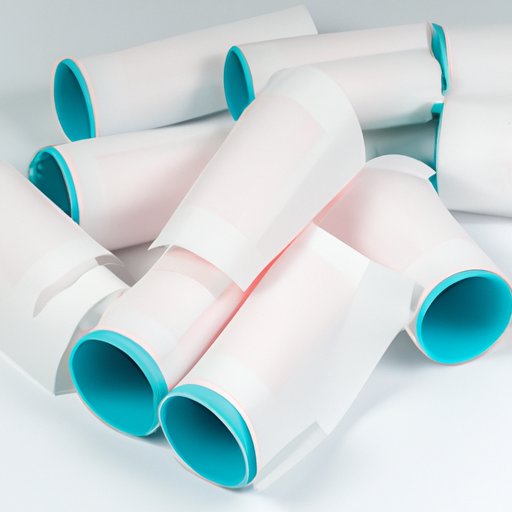
Introduction
Static cling is a common problem that plagues many people when doing laundry. Frustrating and sometimes embarrassing, static cling can leave clothes sticking to the body or each other and can make it difficult to achieve a polished, put-together look. This article aims to provide solutions and advice for removing static from clothes. We’ll cover a step-by-step guide to removing static, do’s and don’ts for avoiding static cling, expert advice on removing static from different fabric types, the science behind how static cling happens, product reviews, and even unusual ways people fight static cling in clothes. Read on to discover how to get rid of static once and for all!
How to Remove Static Cling: Step-by-Step Guide
The first step in removing static cling is to determine what household items you have on hand. Dryer sheets, fabric softener, and even vinegar can help remove static. Here’s how to use them:
- Dryer sheets: Simply toss one or two dryer sheets into the dryer with your clothes. Be sure to use the right amount- too many can cause a build-up of product and actually make static worse!
- Fabric softener: Add fabric softener to your washing machine’s load. Don’t overdo it- too much can cause fabric to become saturated and lead to buildup.
- Vinegar: Add a half cup of white vinegar to the rinse cycle of your washing machine.
If you don’t have these items on hand, don’t worry! Aluminum foil balls can help reduce static in the dryer, and a humidifier can add moisture to the air and reduce static buildup.
Do’s and Don’ts for Removing Static Cling
Prevention is key when it comes to avoiding static cling. Here are some helpful tips:
- Adjust the water temperature. Hot water can strip fabrics of their natural oils, leading to more static.
- Add wool dryer balls to your dryer. The wool helps reduce static and speeds up drying time.
- Use baking soda in the wash. Baking soda acts as a natural fabric softener, reducing static buildup.
On the other hand, there are also some things you should avoid doing:
- Don’t over-dry clothes. Over-drying can lead to more static, so it’s best to remove clothing while slightly damp.
- Don’t use too much detergent or fabric softener. This can lead to residue buildup and contribute to static cling.
- Avoid synthetic materials. Natural fibers such as cotton or wool are less prone to static, whereas synthetic fabrics like polyester or nylon can make static cling worse.
Another way to prevent static cling is to use lotion or wear natural fibers, which tend to be less prone to static.
Expert Advice on Removing Static from Different Fabric Types
When it comes to removing static from different types of fabrics, there are a few general tips:
- For cotton: Use dryer sheets or a small amount of fabric softener in the wash.
- For synthetics: Avoid fabric softener, which can cause residue buildup on synthetic materials. Try using dryer sheets or wool dryer balls instead.
- For delicate fabrics: Use a laundry bag or wash by hand before allowing the garment to air dry.
For more specific advice, we consulted expert laundry services and dry cleaners. Most recommend using a low-heat setting in the dryer for delicate fabrics, and avoiding over-stuffing the dryer which can cause static buildup. Be sure to always check the care label of each garment for specific cleaning instructions.
The Science Behind Static Electricity in Clothes
So, what exactly causes static cling? Static electricity occurs when two fabrics with differing electrical charges come into contact with each other. This imbalance of charges causes one fabric to transfer charges to the other, creating static electricity. Certain fabrics, such as synthetics, tend to cause more static buildup than others.
However, environmental factors such as humidity can also affect static cling. Higher humidity reduces static buildup as it helps neutralize charges between fabrics. If your home is too dry, consider using a humidifier to balance the moisture in the air.
Product Review: Anti-Static Products
There are many products on the market that claim to reduce or eliminate static cling in clothes. Here are some popular products we tested:
- Static Guard: This spray-on anti-static product is easy to use and works well for a quick fix. However, both the product and the spray can create a strong smell so it should be used in a well-ventilated area.
- Downy wrinkle releaser spray: This product helps reduce static while also smoothing out wrinkles. It may not work as well on heavier fabrics or thicker garments, but it does have a light, pleasant scent.
Overall, these products can be helpful for getting rid of static quickly, but they may not be the most cost-effective solution long-term.
Unusual Ways People Fight Static Cling in Clothes
Finally, let’s take a look at some creative solutions people have tried to get rid of static cling in clothes:
- Attach a safety pin to the inside of a garment. The metal helps dissipate static charges.
- Wipe a dryer sheet along the underside of a skirt or dress to help prevent static cling.
- Apply hair spray to the inside of a garment. The alcohol content in the spray helps dissipate static charges.
While these methods may be fun to try, they’re not always the most effective or practical.
Conclusion
Static cling may seem like an inevitable part of doing laundry, but with the right tips and tricks, it can be easily avoided. Whether you’re using common household items like dryer sheets or exploring anti-static products, there are many solutions available. Remember to always check the care label of each garment and avoid overloading your dryer or washing machine. The next time you’re getting dressed, you’ll be able to do so in clothes that are static-free, comfortable, and stylish.




